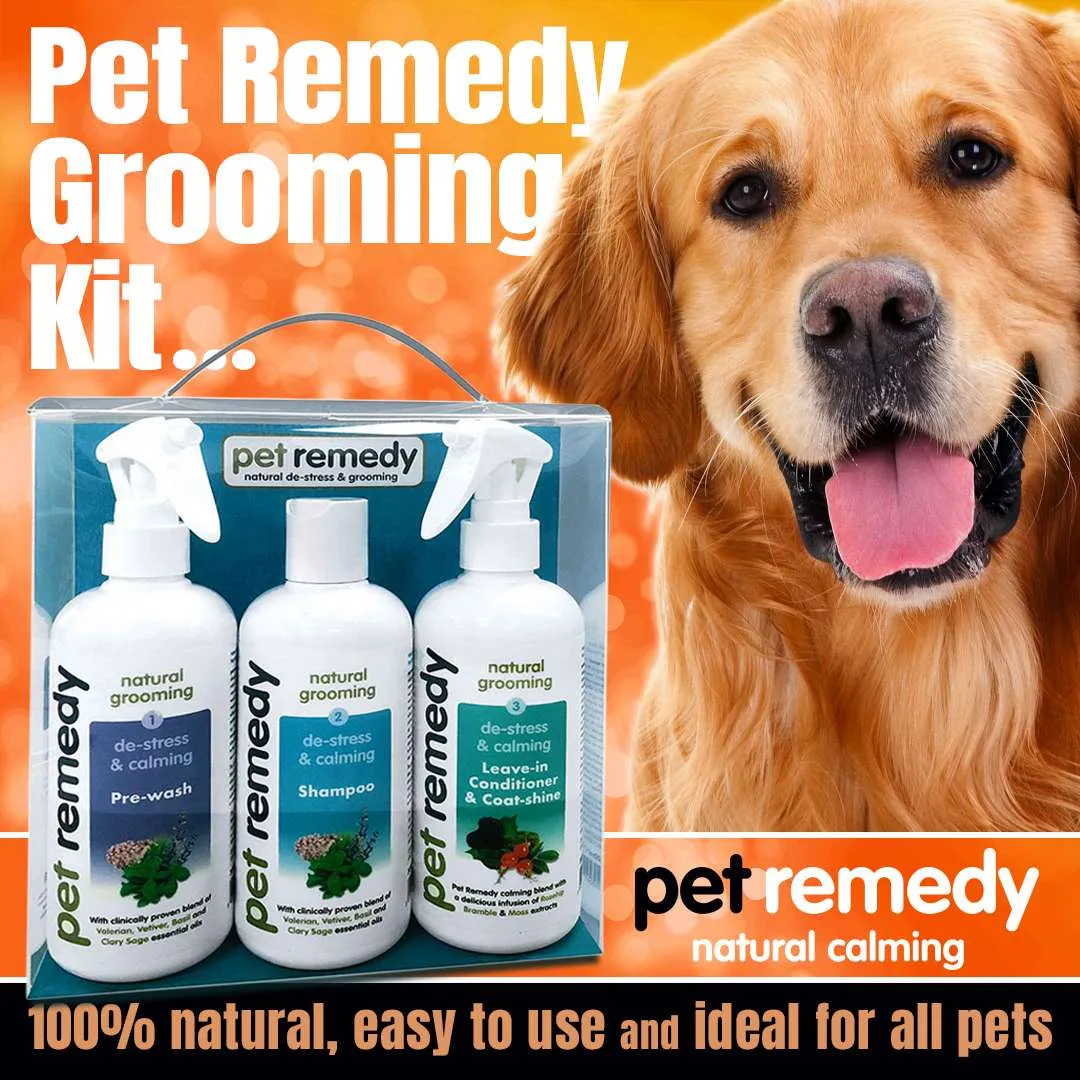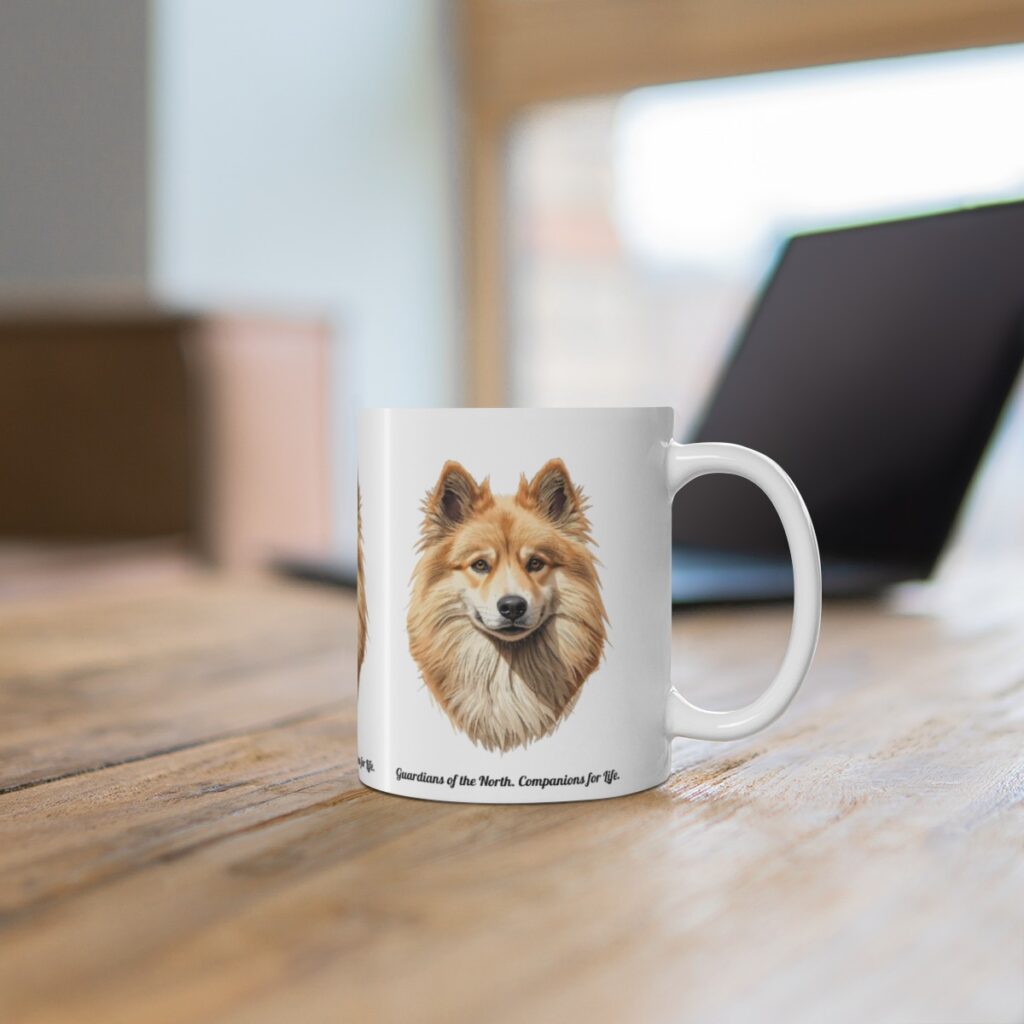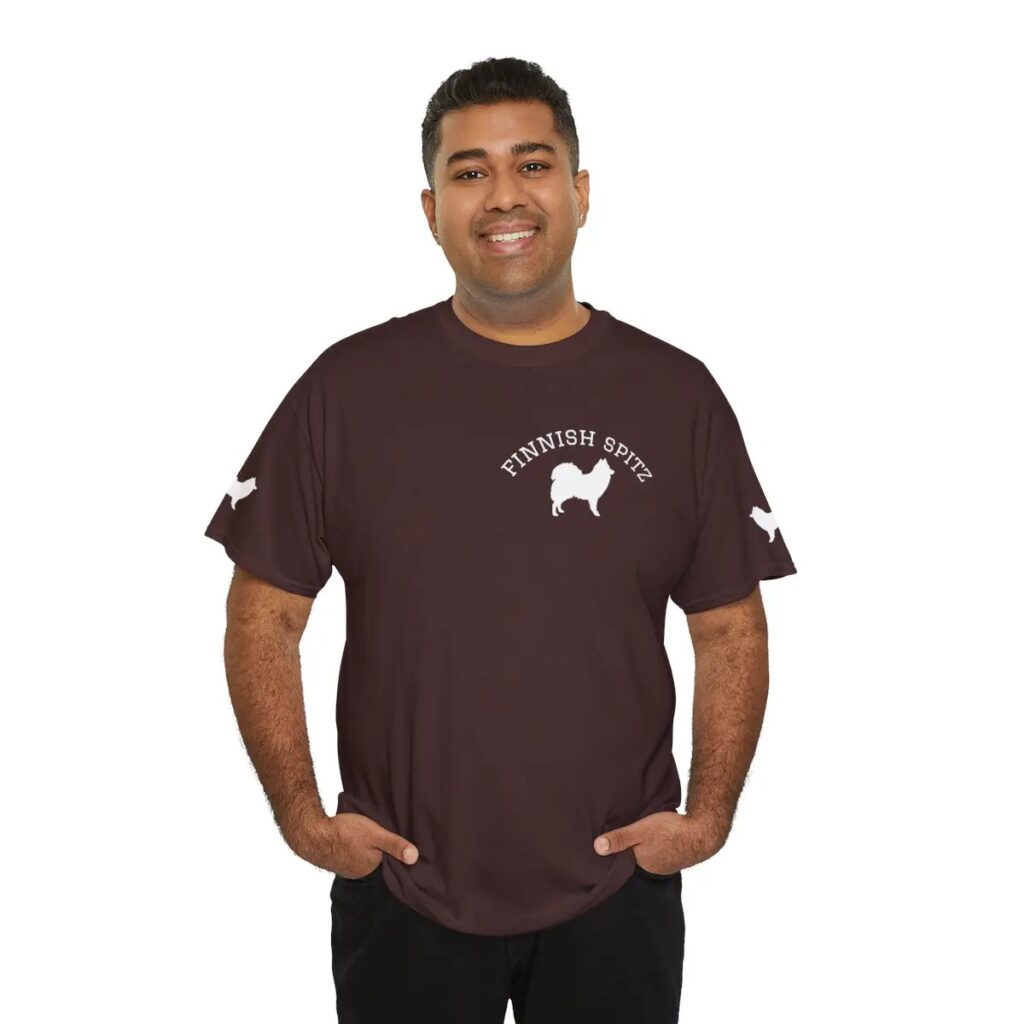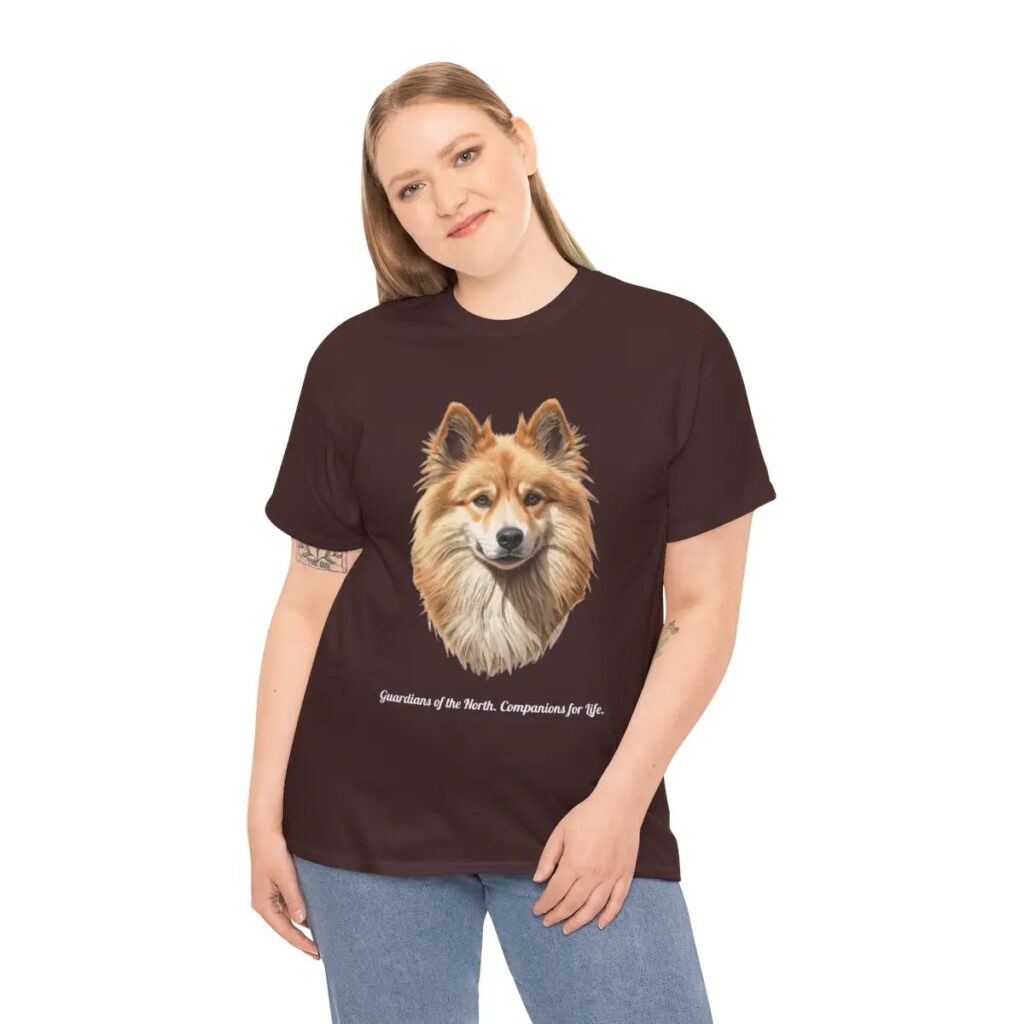Traits, Training, Care
Meet a lively, fox-like companion that blends hunter instincts with family warmth.
The Finnish Spitz earned its place as the national dog of Finland for good reason. You get a medium-sized dog with a rich red double coat and a curled tail.
This guide shows you what the Finnish Spitz temperament really looks like in daily life.
You’ll read about the famous barking voice, love of play, and how they fit with children and active homes.
Training and care are simple when you match their energy and voice needs. Short, positive sessions keep this intelligent spitz engaged and cut down on nuisance barking.
Grooming focuses on seasonal shedding; never shave the double coat.
We also cover health points you should know before you buy. Expect 12–15 years on average and learn to watch for orthopedic issues like dysplasia.
By the end, you’ll know if this hunting dog suits your routine and family life today.
Key Takeaways
- The Finnish Spitz blends lively hunting instincts with affectionate family traits.
- They need regular exercise and short, positive training sessions.
- Seasonal shedding requires consistent grooming; do not shave the double coat.
- Average lifespan is about 12–15 years; watch for dysplasia and routine health checks.
- Strong vocal habits mean considering noise tolerance before bringing one home.
Finnish Spitz temperament
Expect a lively companion that uses voice and motion to share its moods and needs.
This dog is affectionate, playful, and quick to bond with family. It also stays alert and curious in new situations.
Core personality: lively, affectionate, alert, and good-natured
Bright and social: these dogs love family time and games. Short, regular attention keeps them happy.
Good with children: they are playful and patient, often choosing to move away from rough play rather than react. Supervision still matters.
The “Barking Bird Dog”: what their hunting roots mean for vocalization
Originally used by hunters to find birds, this breed speaks a lot. Rapid barking helped locate game.
Expect vocal bursts during play or when they spot wildlife.
With children, other dogs, and strangers: brave but cautious, family-first
- With other dogs: friendly when socialized early.
- With strangers, often cautious, ongoing socialization builds confidence.
- Training tip: Positive guidance helps control barking and focus attention.
| Trait | How It Shows | Practical Tip |
|---|---|---|
| Affection | Clings to family, greets warmly | Daily play and lap time |
| Alertness | Notices new sounds, watches closely | Teach a quiet cue for neighbors |
| Vocal hunting instinct | Rapid bark at birds or movement | Use rewards to train speaking times |
| Social needs | Thrives with consistent routines | Early socialization and short training |
Is this breed right for your home and lifestyle?
Deciding if this energetic breed fits your daily routine starts with honest questions about space, time, and noise.
Best-fit homes include active families with a secure yard and someone home for part of the day.
These dogs were bred as hunting companions and have long stamina. They need daily exercise and a safe outdoor space to run.
A fenced yard prevents quick dashes after wildlife and keeps them safe.
Who should think twice?
If you live in an apartment, have noise-sensitive neighbors, or spend long hours away, this may not be a good match.
Excessive barking can be an issue without consistent training and socialization. Thin walls and close neighbors make management harder.
Practical guidance
- Choose this dog if you can provide daily walks, play, and short training sessions.
- Plan for social introductions — they can be wary of strangers and other dogs without gentle exposure.
- Avoid this breed if you prefer a low-activity pet or travel often and leave the dog alone.
“Match your schedule, yard, and noise tolerance to the dog’s needs — when they align, you’ll gain a devoted, spirited companion.”
Exercise, enrichment, and daily life needs
Plan a daily routine that balances brisk walks, short lessons, and playful downtime to match this breed’s energy. A clear schedule helps prevent boredom and keeps your household calm.
A sample day can start with a morning walk to burn off morning energy and reinforce leash manners.
Add a short training session—five to ten minutes—using treats and toys to build skills.
A sample day: walks, play, training sessions, and downtime
Midday, offer a sniff walk or a quick scent game to channel hunting instincts.
Rotate puzzle feeders and chew time when you need focused work time at home.
- Evening walks reinforce recall and good leash manners.
- Keep training sessions short so the dog stays engaged.
- Use long-line recall practice in secure areas before off-leash play.
Rest and variety matter. On bad-weather days, increase indoor enrichment like nose work and foraging mats. Give mini interactions and steady attention throughout the day so your dog settles more easily.
“Consistency over many days helps this spitz thrive and makes daily life smoother for both of you.”
Training and socialization strategies for a strong-willed spitz
Training a strong-willed spitz takes clear rules, short wins, and rewards that make learning feel like play.
These dogs respond to firm, gentle consistency. Keep sessions brief and upbeat so focus stays high.
Positive, reward-based training
Use high-value rewards — treats, toys, or play — to make lessons feel like a game. End each session on a success to build confidence.
Multiple short training sessions per day keep your Finnish Spitz engaged without boredom.
Reducing excessive barking
Teach both a “speak” cue and a reliable “quiet” cue. Interrupt rising barking with redirection to a settled behavior like a mat stay.
Reward silence often so your dog learns that calmness earns the best outcomes.
Managing prey drive and recall
Use a long line and fenced areas while you build recall. Start recall games close, with the best rewards for coming when called.
For hunting instincts, offer controlled scent work and find-it games instead of chasing birds or small animals.

| Tool | When to Use | Benefit |
|---|---|---|
| Short reward sessions | Daily, 3–5 minutes each | Prevents boredom and strengthens focus |
| Long line | Recall practice off-leash in open areas | Safe distance control while building trust |
| Mat or target | Interrupt barking and teach calm | Redirects energy to a known cue |
| Scent games | Indoor or fenced yard play | Satisfies hunting drive without chasing birds |
Grooming and double coat care throughout the year
Manage heavy shedding with a simple routine and the right tools for the double coat.
A steady plan reduces messes and keeps your home cleaner. Weekly work is enough for most of the year.
During the spring and fall coat blow, step up to daily brushing to remove loose undercoat.
Shedding seasons and brushing frequency
Expect two major shedding seasons. In spring and fall, the coat “blows” out.
Short, daily sessions remove loose hair and cut down on tracking fur indoors. Use a slicker or pin brush and finish with a comb to reach the underlayer.
What not to do
Never shave a double coat. Shaving ruins insulation, raises sunburn risk, and can harm regrowth.
Bathe only when needed with a dog shampoo. Dry on a cool setting to protect the texture of the outer coat and to reduce matting.
Routine care checklist
- Brush weekly; daily during shedding season.
- Check ears, head, feet, and tail area for ticks.
- Trim nails when they click on floors; brush teeth daily.
- Use gentle de-shedding tools and positive rewards during sessions.
“Consistent, short grooming sessions keep the double coat healthy and your dog comfortable.”
| Task | Frequency | Benefit |
|---|---|---|
| Brushing | Weekly / Daily in shedding season | Removes loose coat; prevents mats |
| Bathing | As needed | Maintains skin oils; avoid overbathing |
| Nail trim & teeth | Monthly / Daily brushing | Comfort and dental health |
With steady grooming and short sessions, your Finnish spitz will stay healthy and happy year-round.
Good care protects the coat and supports long-term health.
Health, lifespan, and preventative care
Early screening and steady checkups protect mobility and overall well-being. Plan for about 12–15 years with this breed.
Preventive care keeps many issues manageable and comfortable.
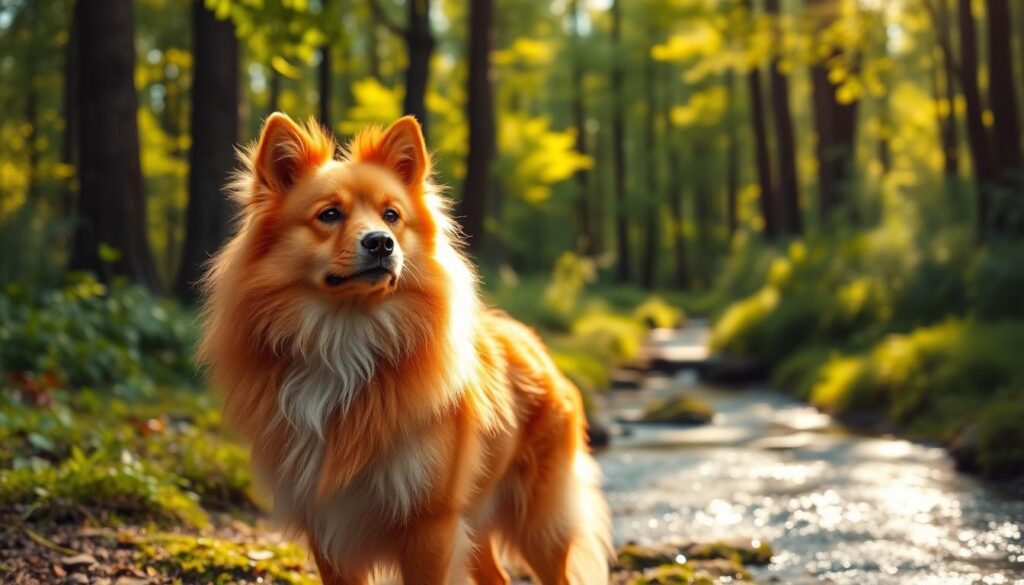
Common conditions to watch
The most frequent concerns include hip dysplasia, patellar luxation, hypothyroidism, and epilepsy.
Hip problems and dysplasia affect gait and activity.
Hypothyroidism shows as coat thinning, weight gain, and low energy. Seizures need immediate vet care; many dogs live well with medication.
Vet care timeline and vaccines
Puppies should see the vet every 3–4 weeks until 6–8 months. After that, switch to annual wellness checks with age-appropriate labs.
Core vaccines are required. Discuss non-core options—Bordetella, Lyme, Leptospira, and canine influenza—based on lifestyle and risk.
Start heartworm prevention by eight weeks and continue year-round. Prevention is much safer than treatment.
Signs to watch by age
- Young dogs: joint stability and hip/elbow development.
- Middle years: weight control, ear checks, coat condition, and dental care.
- Seniors: mobility, stiffness, cognitive changes, and lab monitoring.
“Discuss orthopedic screening and long-term plans with your veterinarian early; good records help spot trends over the years.”
| Area | When to Check | Action |
|---|---|---|
| Joints (hip dysplasia) | Puppy growth & adult exams | Orthopedic screening, weight control, supplements if advised |
| Thyroid | Middle-aged or when coat/weight changes | Bloodwork and daily medication if diagnosed |
| Neurology (seizures) | Any seizure event | Immediate vet evaluation and long-term management |
| Preventive care | Every 3–4 weeks as a puppy; annually later | Vaccines, heartworm prevention, dental, and ear checks |
Practical tip: Use body condition scoring with your vet to prevent obesity. Keep training and care notes together.
Consistent routines reduce stress at visits and support long-term health for your dog.
Diet, weight, and feeding plans for each life stage
Daily feeding choices power your dog’s energy, body condition, and years of happy life.
Choose a complete, AAFCO-aligned diet for the correct life stage. That supports steady growth and a healthy weight.
Puppies need calorie-dense formulas labeled for growth. Switch to adult food around one year of age.
How much and how often: puppies vs. adults vs. seniors
Puppies: feed three to four times per day to reduce hypoglycemia risk and keep energy steady.
Adults: most do best with two meals per day. Consistent meal times aid digestion and training.
Seniors: reduce calories if activity drops and consider small, frequent meals if digestion slows.
Supplements and special diets: when your vet may recommend them
Most healthy dogs on a complete diet don’t need extras. Ask your veterinarian before adding joint, skin, or probiotic supplements.
- Follow bag guidelines and adjust by activity and body condition.
- Monitor weight monthly; you should feel ribs with a slight fat cover.
- Transition foods slowly over 7–10 days to avoid upset.
- Track treats as part of daily calories and keep water available all day.
| Life stage | Meals per day | Focus |
|---|---|---|
| Puppy | 3–4 | Growth, steady glucose |
| Adult | 2 | Maintain weight, activity |
| Senior | 1–2 | Lower calories, joint support if needed |
Conclusion
For active households that value voice, play, and clear routines, this dog can be a joyful match.
The Finnish Spitz brings an animated personality, a fox-like outline, and a curled tail that suits lively family life.
Give time for walks, short training sessions, and scent games to channel hunting instincts. Simple grooming keeps the coat in good condition.
As an AKC Non-Sporting entry, the breed blends alertness and devotion among similar breeds. Plan for a talkative companion and manage voice with consistent cues.
Ready to move forward?
Connect with reputable breeders or adoption groups, ask health and temperament questions, and plan the first weeks at home with confidence.



